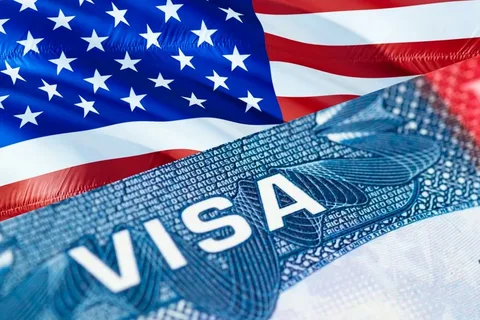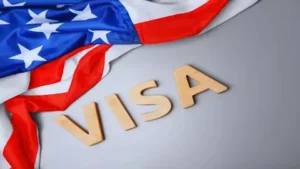In a move that’s sparking conversations across the travel and immigration space, the United States government has announced plans to reinstate a controversial visa policy: a $15,000 visa bond requirement for travellers from certain countries they regard as “high-risk” countries.
Originally introduced as a pilot program during the Trump administration in 2020, this bond was designed as a financial deterrent for visa overstays. While it was short-lived back then, it’s now making a return, and this time, it may have more weight behind it.
So, what does this mean for travellers, students, workers, or even those going on short-term visits to the US? Who exactly will this affect? Why is it coming back now? And most importantly, how should you prepare?
Let’s break it all down.
What Is the $15,000 Visa Bond?
The visa bond is a financial deposit imposed on certain visitors applying for nonimmigrant US visas (particularly the B1 /B2 visa, which covers business and tourism). Under this policy, applicants from selected countries will be required to post a bond of up to $15,000 before being granted a visa.
The bond is refundable but only if the traveller leaves the US on time before their visa expires. If the traveller overstays their visa or violates the terms of entry, the bond is forfeited.
This bond is not a fee you pay to the embassy and forget—it’s a security deposit that essentially tells the US government that you will exit the country as and when due and you have $15,000 to prove it.
What Has Changed and Why Now?
The reintroduction of this policy isn’t happening in a vacuum. The US government is doubling down on immigration enforcement and border control, especially in response to increasing global migration pressures.
Here’s what’s changing:
From pilot to permanent (or semi-permanent): Initially, the $15,000 bond was a 6-month trial. Now, it’s being considered for broader enforcement and could become part of standard visa processing for select countries.
Country-specific targeting: The focus is on countries with consistently high visa overstay rates, as identified in reports by the U.S. Department of Homeland Security (DHS). Countries now under consideration include several in Africa, Asia, and Latin America, reflecting a tougher stance on visa compliance across the board.
Tougher scrutiny across the board: Beyond the bond, applicants may also face more stringent documentation and vetting requirements. This includes stronger proof of ties to their home country, financial stability, and clear travel intent.

Who Will This Apply To?
The visa bond does not affect all travellers—only applicants from specific countries flagged as “high-risk” for visa overstays. These include nations with overstay rates above 10%, based on data from US immigration and DHS.
Countries previously listed in the US 2020 Visa Bond Pilot Program included:
Afghanistan, Angola, Bhutan (Burma), Burkina Faso, Burundi, Cabo Verde, Chad, Democratic Republic of the Congo (DRC), Djibouti, Eritrea, The Gambia, Guinea‑Bissau, Iran, Laos, Liberia, Libya, Mauritania, Papua New Guinea, São Tomé & Príncipe, Sudan, Syria, Yemen.
While the official updated list has not yet been formally published, reputable sources and early regulatory previews suggest it is likely to include many of the same countries unless the US government updates its overstay statistics.
Also, not every traveller from these countries will be required to pay the bond. It depends on the consular officer’s discretion—they may impose the bond if they believe there’s a risk the applicant might not return home after their visa expires.
It Mostly Affects:
First-time visa applicants
Applicants with weak travel history
People with low proof of strong home ties
Solo travelers without accompanying family
Young, unemployed applicants
How the Process Will Work
If you’re applying for a US B1/B2 visa and are from one of the affected countries, here’s what to expect:
Apply for your visa through the normal process: fill out the DS-160 form, pay the application fee, and attend your visa interview.
If selected, the consular officer will inform you that you need to post a visa bond of up to $15,000 before your visa can be issued.
The bond must be paid to a designated US government account or financial institution. You’ll receive specific instructions on how to do this.
After your visit to the US and timely return home, you can apply for a bond refund—but you must provide evidence of your departure and proof you complied with your visa terms.
If you overstay, violate terms, or fail to report your departure properly, the bond will be confiscated.
Why Is This Being Done?
According to US officials, the goal is simple: reduce visa overstays.
Each year, thousands of visitors remain in the US after their visa expires. This strains immigration systems and undermines visa integrity. The bond policy aims to “create accountability” for travellers—if you have something to lose, you’re less likely to overstay.
Critics say it’s discriminatory and financially burdensome. Supporters argue it’s a necessary tool to address longstanding abuse of visitor visas, especially in cases where deportation is expensive and complicated.
What This Means for Travellers
For many Nigerians, this could complicate US travel plans. Here’s how:
1. It Adds a Financial Barrier
Not everyone has $15,000 sitting in a bank account for a refundable deposit. This may block legitimate travellers—especially students, small business owners, or first-time tourists—from accessing US opportunities.
2. It Signals Tighter Immigration Rules
This move sends a clear message that US immigration policy is becoming more cautious, especially toward countries with high overstay records.
3. It Affects Visa Approval Odds
Even if you can afford the bond, being flagged as “high-risk” might make visa officers stricter with approvals. Your documentation must be airtight.
4. It Could Affect Repeat Visitors
Even frequent travellers might be required to pay the bond if the officer deems it necessary, particularly if your travel patterns raise questions.
Pro Tips If You Plan to Travel?
Strengthen Your Application
Make sure your documentation is solid—show proof of employment, business ownership, school enrollment, or family ties. Anything that proves you will return to Nigeria after your trip.
Prepare Financially
If you’re from an affected country, save ahead or plan your travel around possible bond requirements. If you’re granted a visa without the bond, great. If not, you’ll be ready.
Consult Experts
Talk to immigration consultants or experienced visa applicants. Learn from those who’ve successfully navigated the system—especially if you’re applying for the first time.
Explore Alternatives
If the US is proving too tough to enter, consider countries with friendlier visa policies—Canada, UK, UAE, or even countries in the Schengen zone may offer more accessible travel pathways.
Visa policies are evolving, but with the right information and preparation, you can still position yourself for success, whether for business, education, tourism, or family visits.

